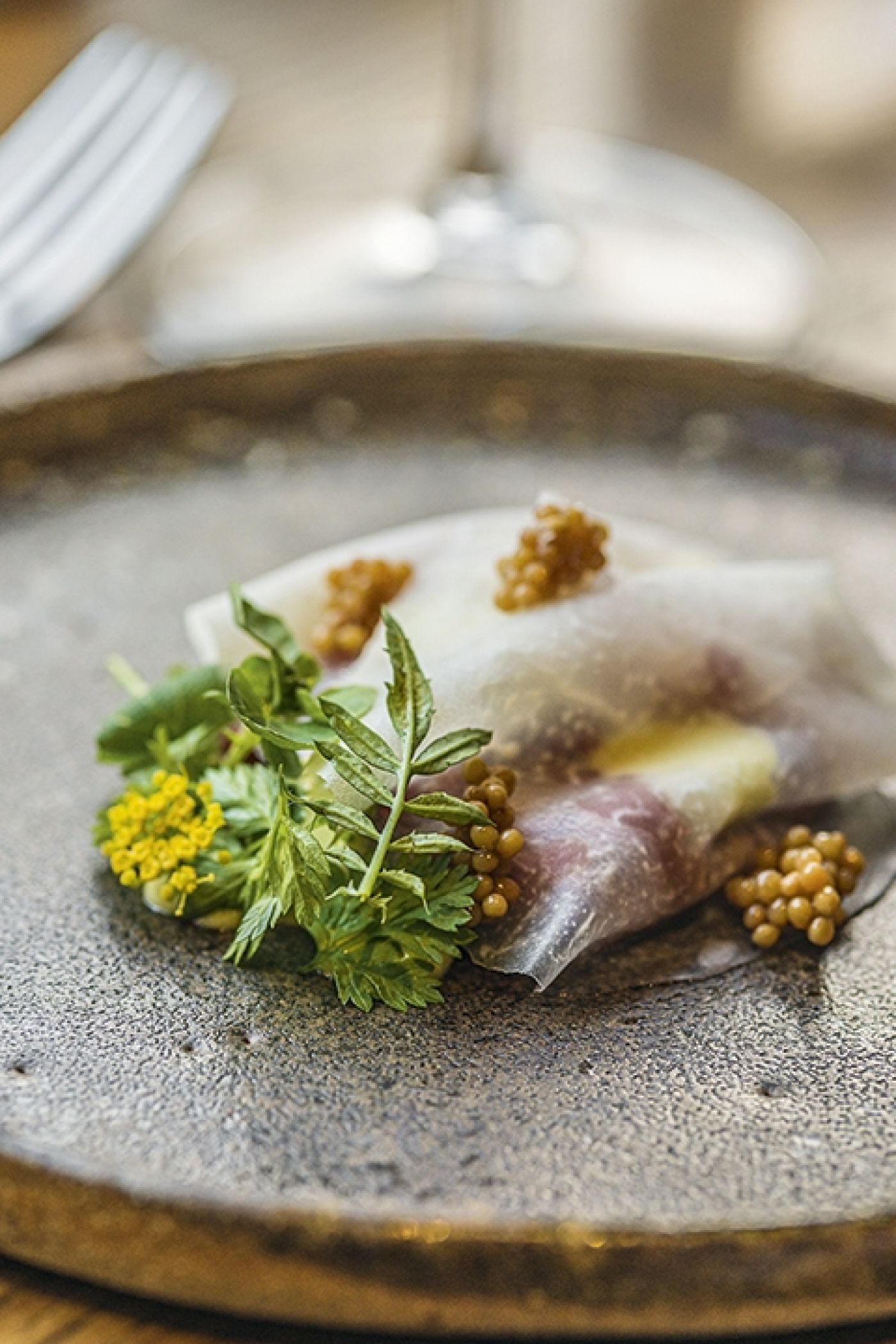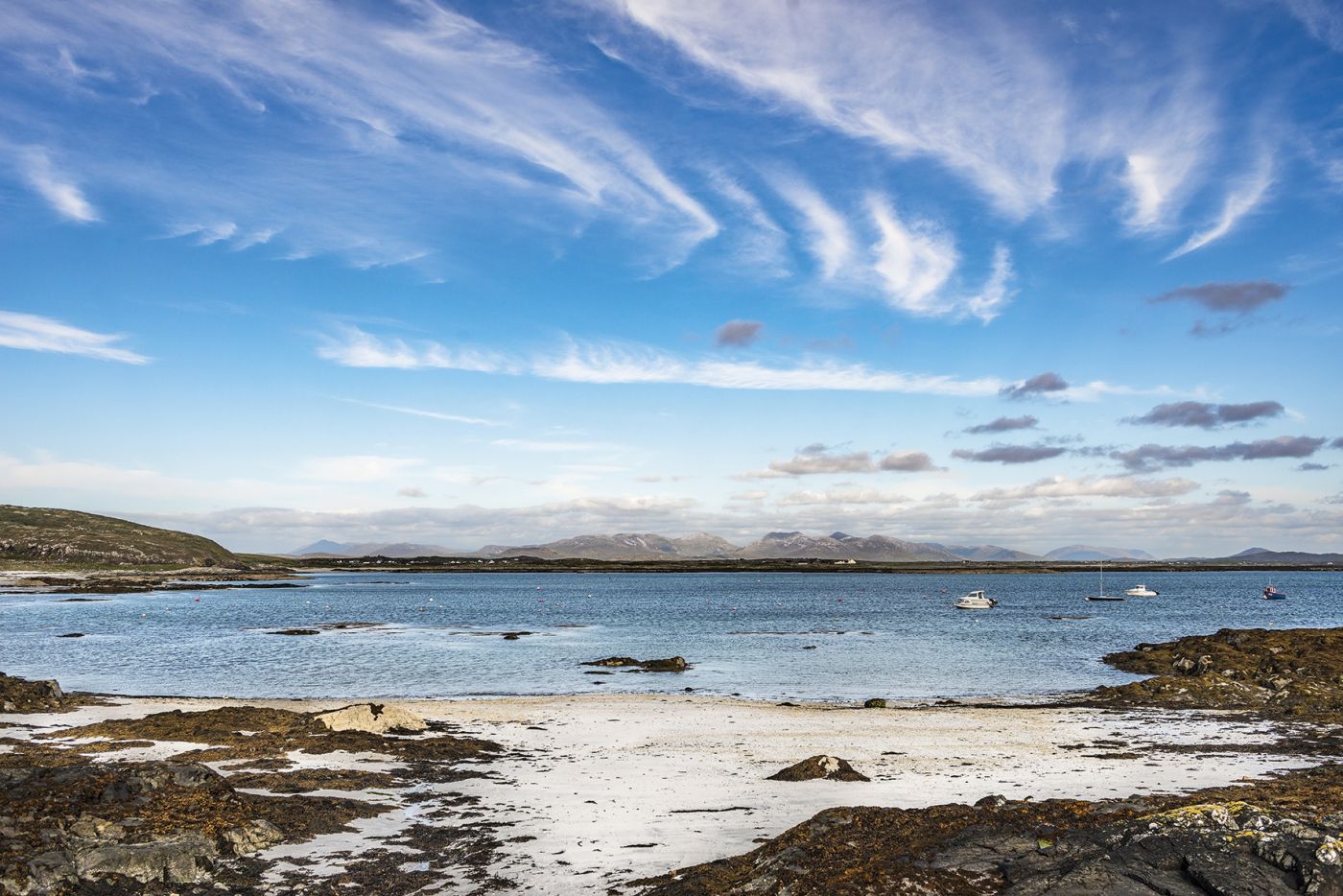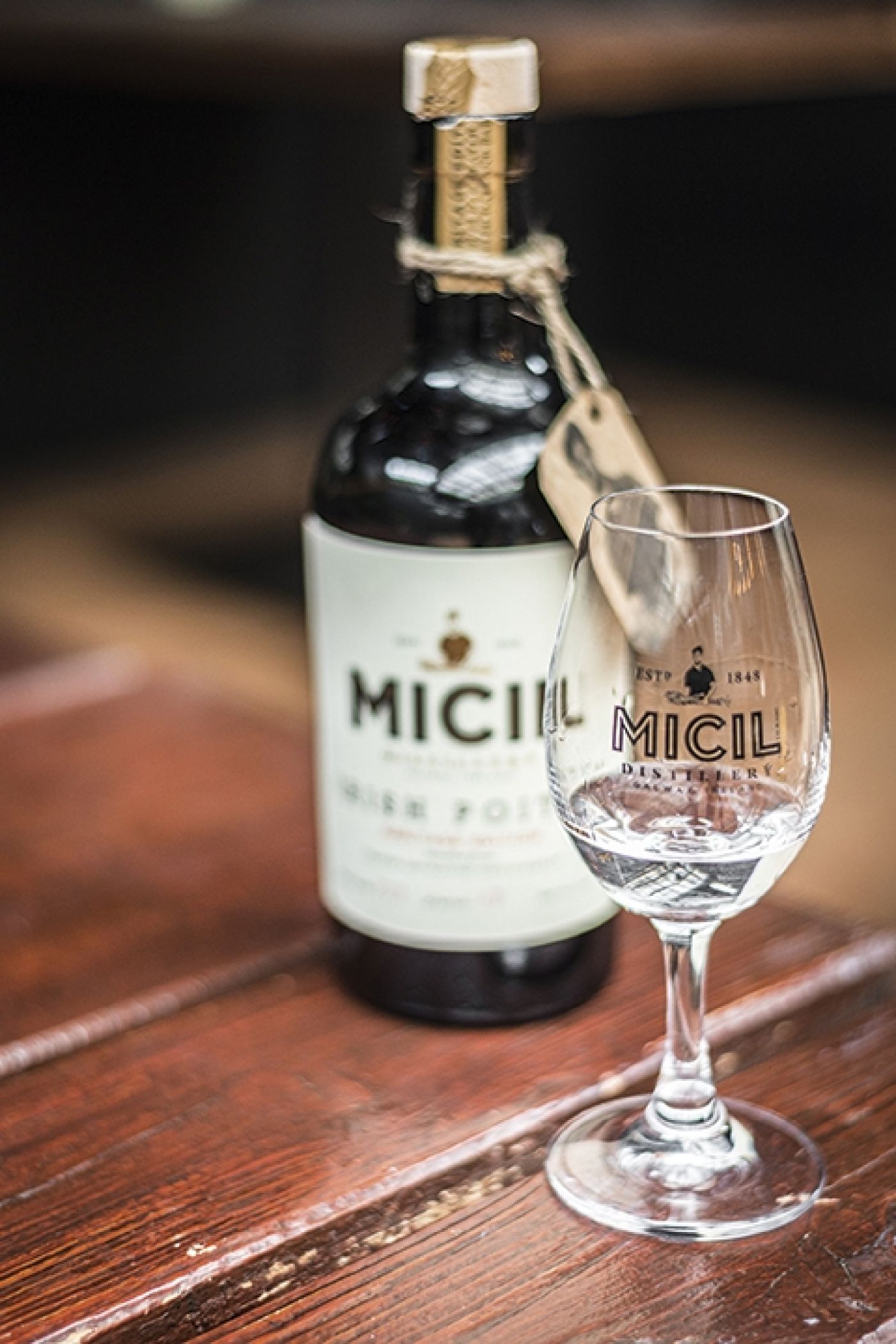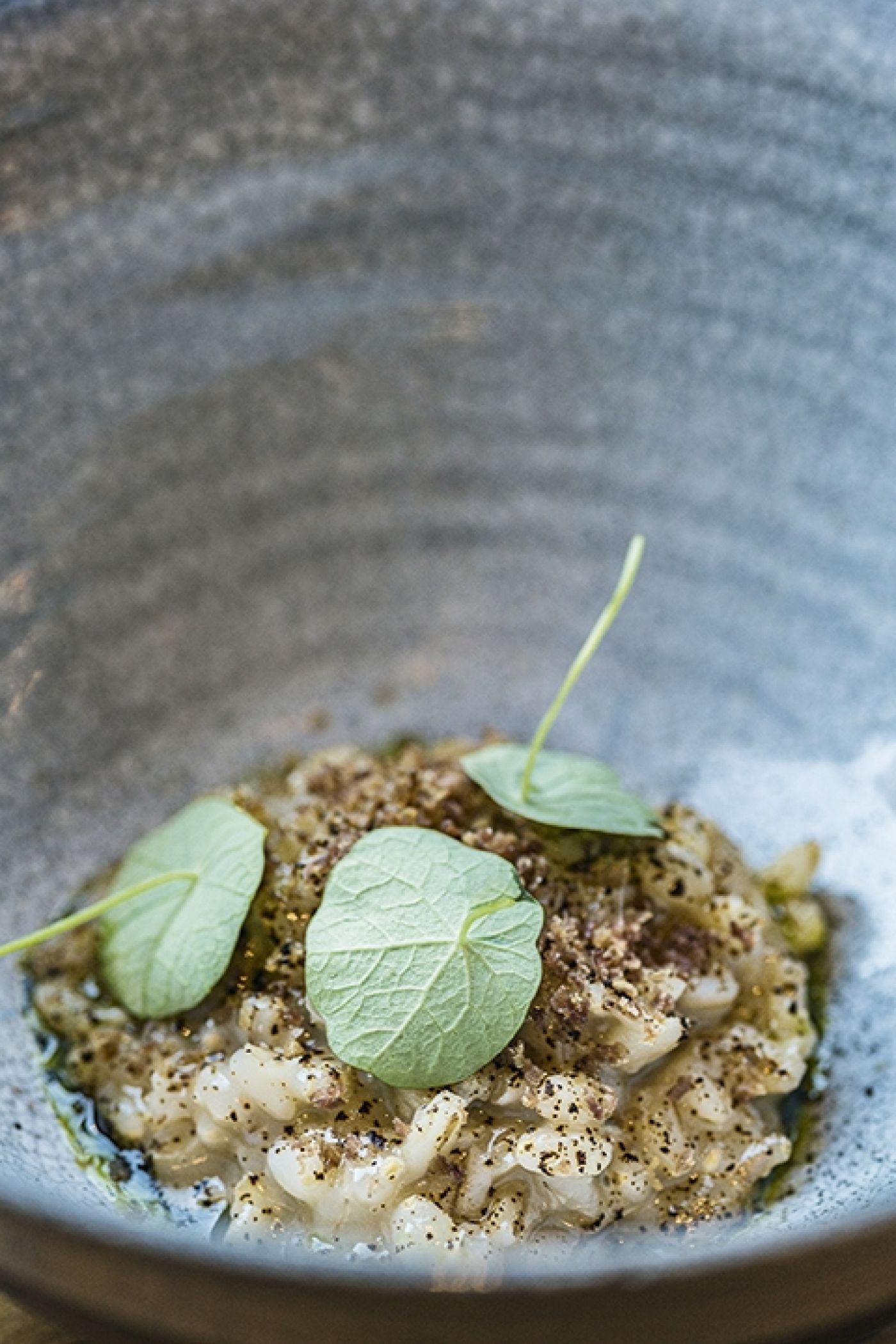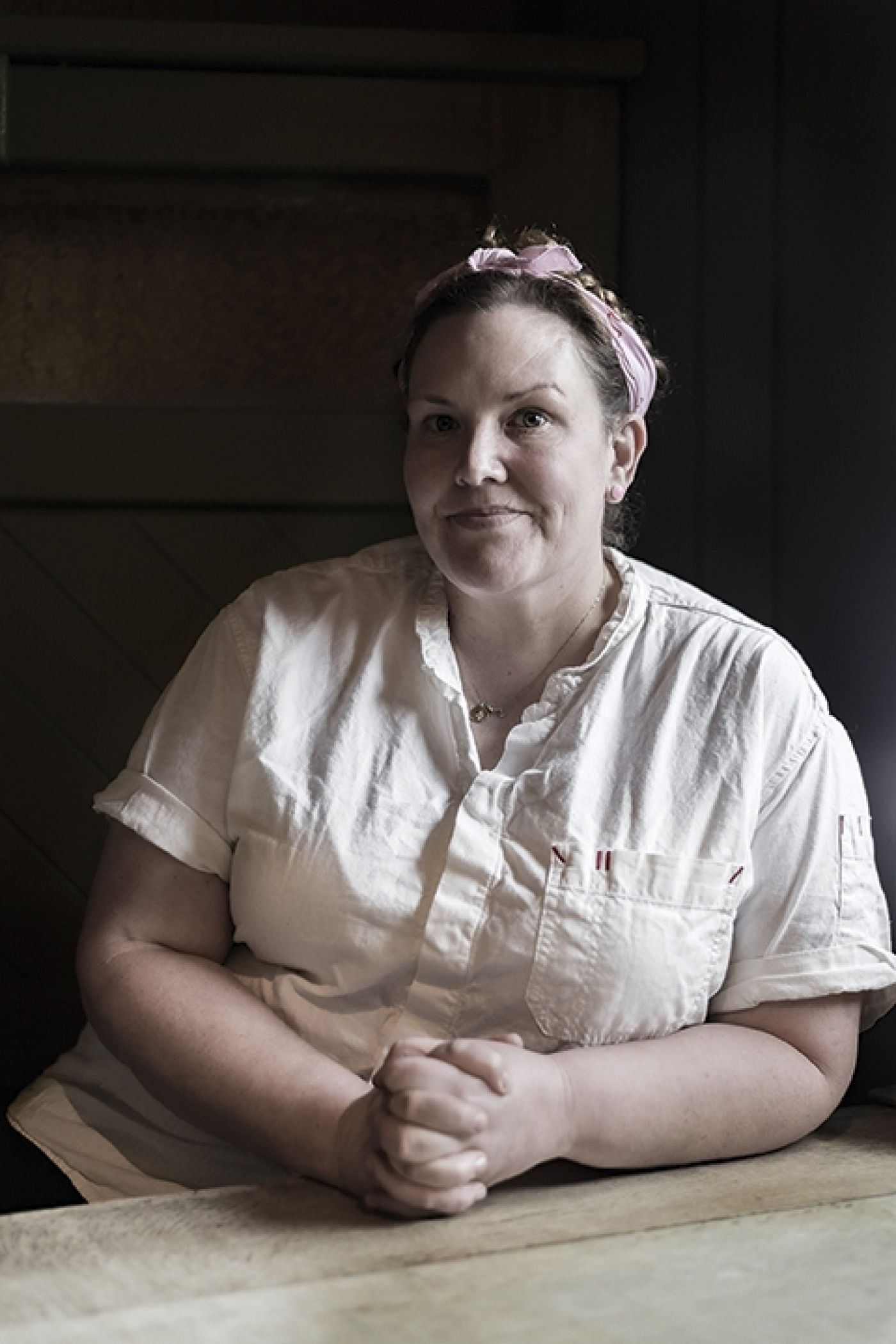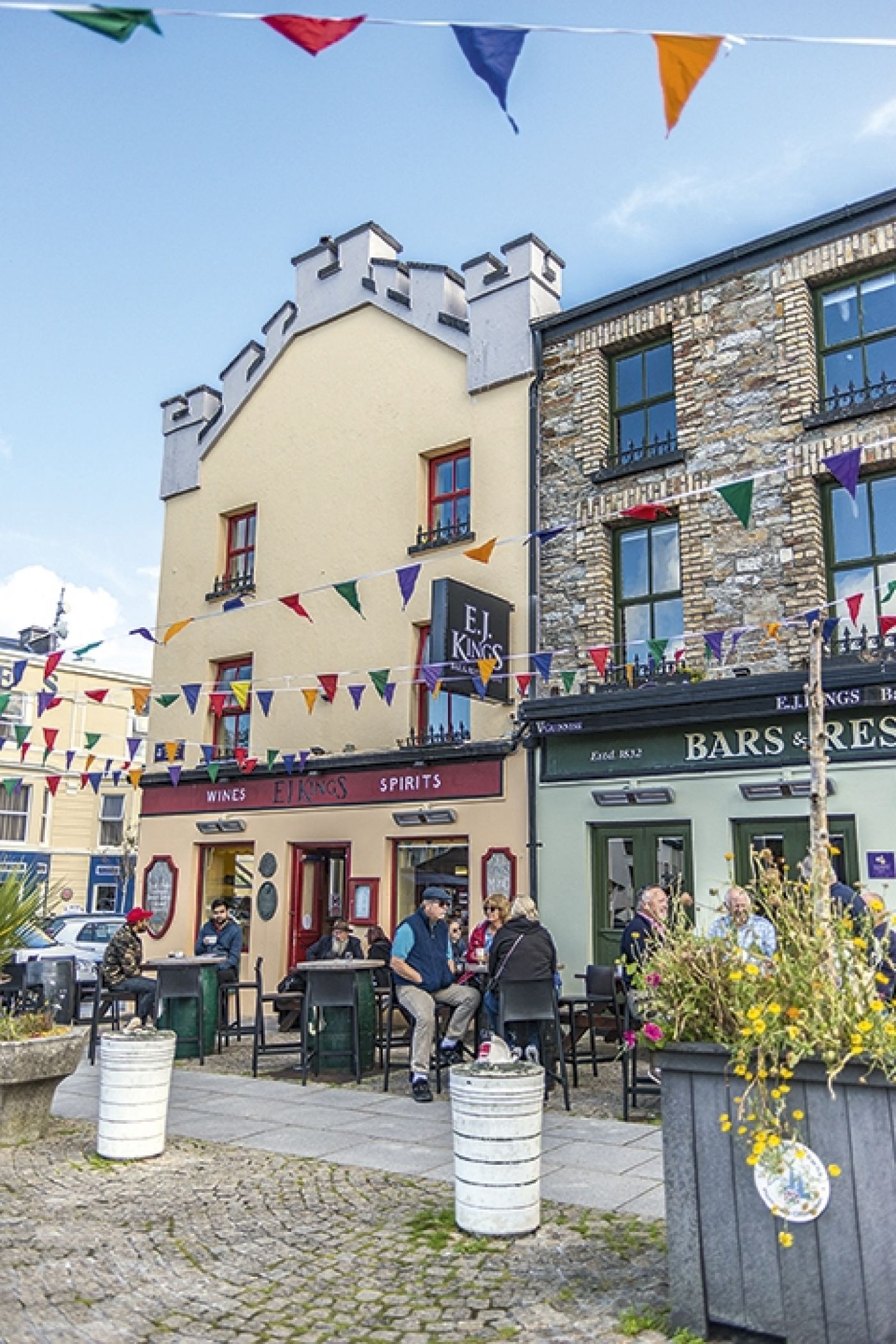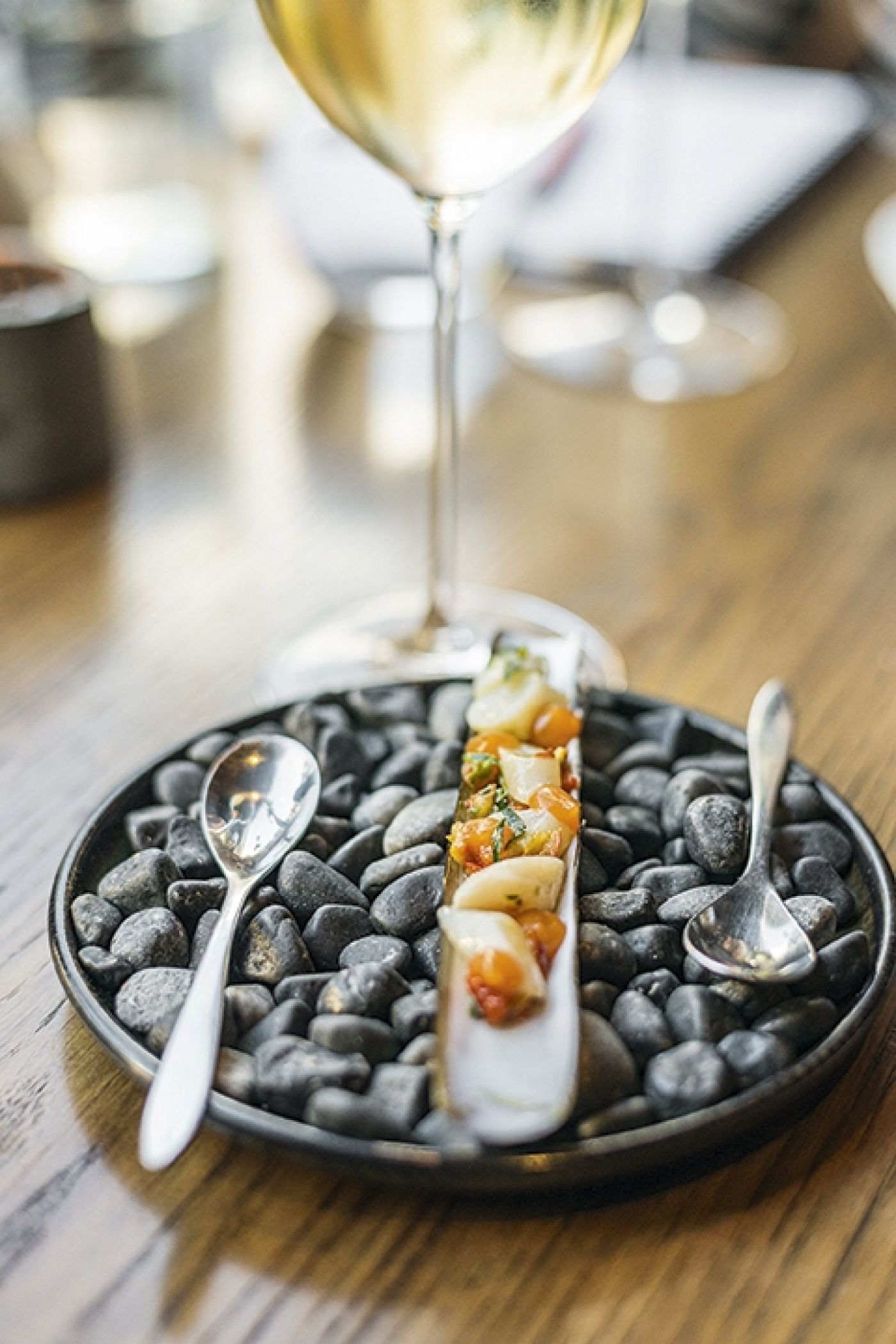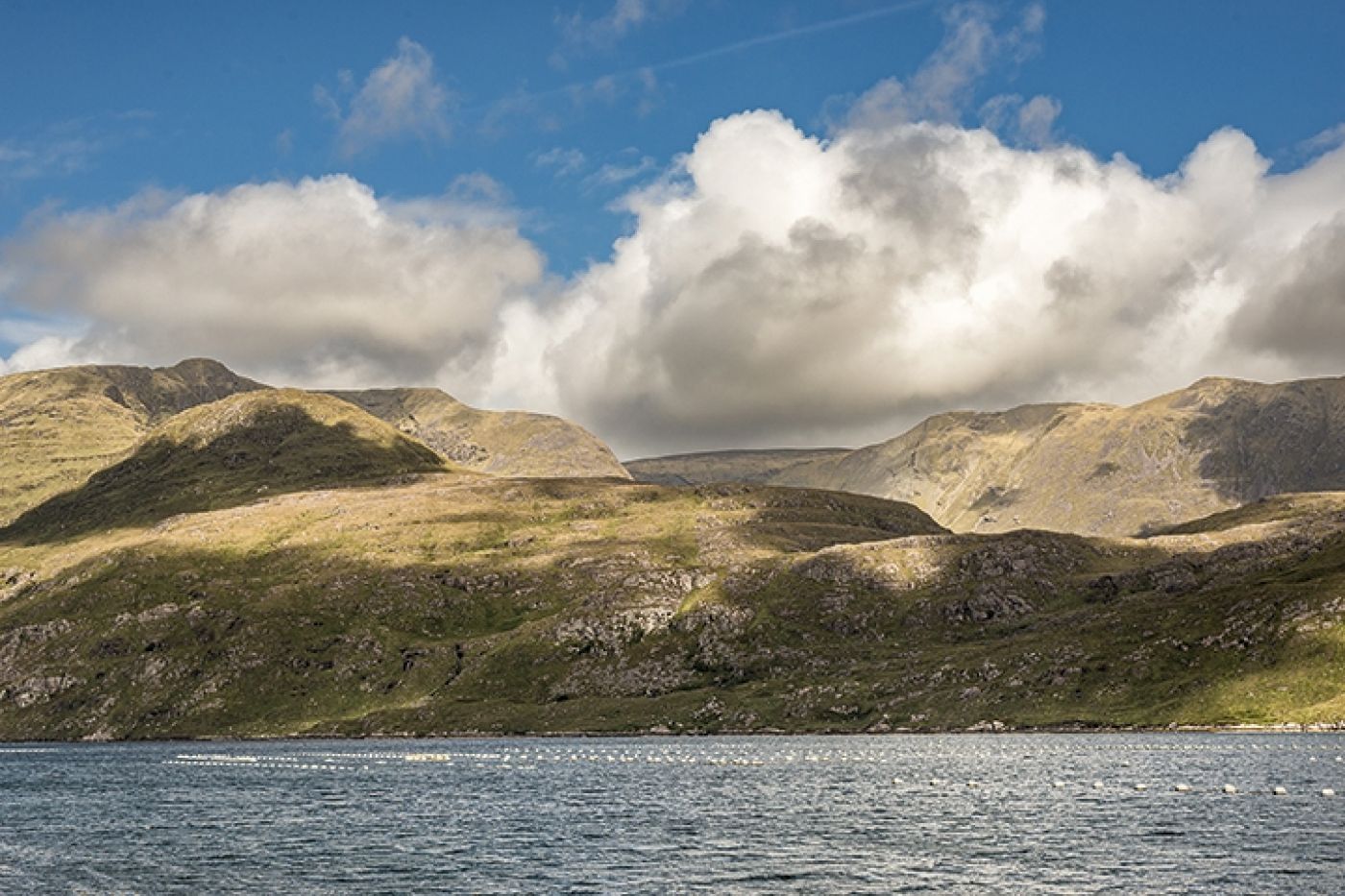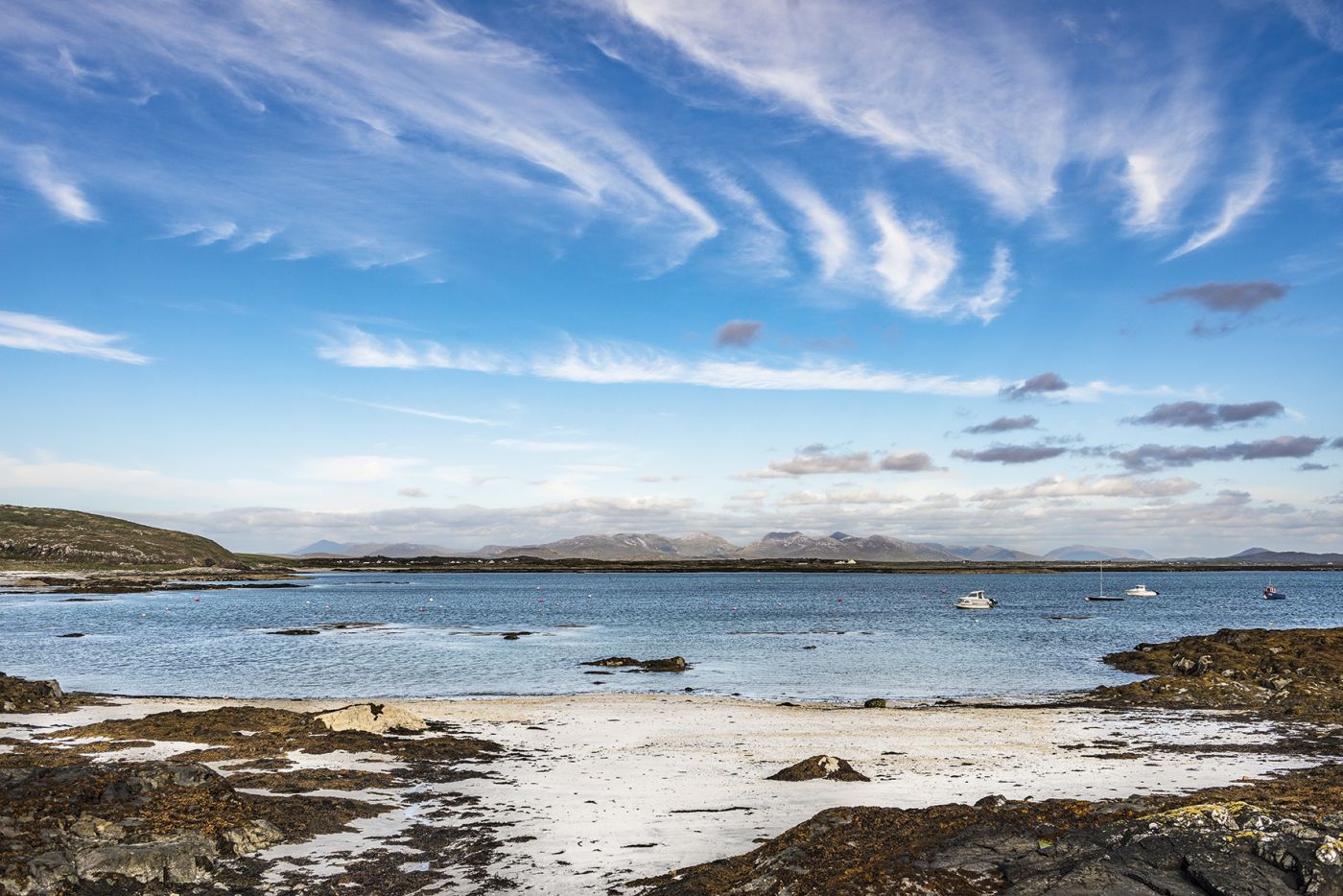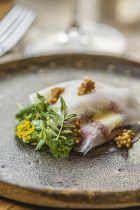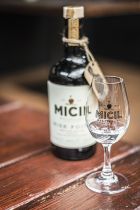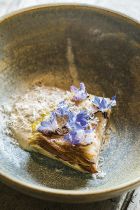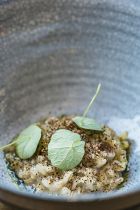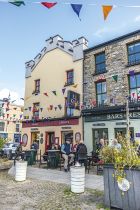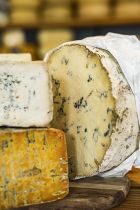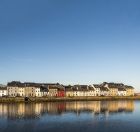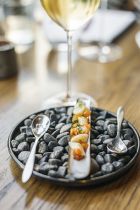
Food and Travel Review
On a fresh, sunny day beside the sparkling-clear waters of Bunowen Bay on Ireland’s rugged, Atlantic coast, smokerhouse owner Graham Roberts tells stories of the past. ‘In June and July, when the salmon were due to approach the shore, a few “spotters” would sit on the cliff over there to catch the first sight of the fish jumping,’ says Graham. ‘This could take days, even a week, because if there’s not enough rain, the salmon can’t smell the river they’re heading for – and they pass on by. If there’s too much, they rush straight up river without jumping, so the fishermen would miss their chance to catch them.’
To ensure the best, Connemara-based Graham sources from many local fishermen in County Galway – his father worked with their fathers – and the life he describes was, and still is, a hard one, for the Atlantic storms can be ferocious. But the fertile ocean is generous too; tuna migrate here around August and mackerel are fat and plentiful during the winter months.
The subtle-flavoured, beechwood-smoked salmon Graham produces is one of the many fine, local food products on the tables of nearby Galway’s increasingly notable restaurants. Much of the credit for this gastronomic evolution lies with JP McMahon, chefpatron of Aniar (Gaelic for ‘from the west’) in Galway city’s West End. ‘We’ve the best ingredients here, on the west coast of Ireland,’ he says. ‘All we need to do is present them in the best possible way, and that’s often the simplest way.’ JP makes good his words as his frequently changing tasting menus are only finalised when the day’s ingredients arrive in Aniar’s kitchen. In the hospitable, understated dining room, shelves display jars of pickled elderflowers, wild garlic, dried berries and herbs, the offerings of the local terroir, the entire natural environment. ‘History fascinates me,’ he says. ‘I want us to reclaim the rich diets we had in the past, of fish and foraged wild foods, and move with our knowledge into the future.'
'We've the best ingredients here, on the west coast of Ireland. All we need to do is present them in the best possible way, and that's often the simplest way. I want to reclaim the rich diets we had in the past'
Foraging, once practised out of necessity by the poor, is a preferred way of life for Claire Davey, a herbalist and distiller whose mother and grandmother are foragers too. ‘People rarely pay attention to the flavours of drinks in the way they do to those of foods,’ she explains, ‘so I’ve created a “liquid kitchen” to bring seasonal, countryside flavours into the city.’ Pots containing gentian root, fennel and coriander seeds, wormwood leaf and rosemary essence surround her in the Flavour Academy, part of The Galway City Distillery, with a tray of medlars gently rotting in front. ‘They have to rot before you can use them,’ Claire explains, as she also checks on her spread of sumac berries: ‘They need to be dry for me to make a liqueur. I also make gins and syrups with the blackberries, rosehips, rowans and elderberries I collect in the autumn. Everything I use is Irish, except for wine.’
Wine, while not a regional product, is no stranger to Galway. ‘The city was once a major importer of wines from the Iberian Peninsula,’ says cheesemonger Seamus Sheridan, co-owner of his eponymous shop opposite the medieval St Nicholas church, ‘as well as a big
exporter of whiskey, cloth and foods.’ The port has in fact defined Galway for centuries, through good times and bad: the elegant Georgian houses standing on the banks of the city’s River Corrib and the handsome, early-Victorian buildings in the city centre both provide evidence of past trade-wealth. But the once-busy port and beautiful bay, one of the few sheltered harbours on Ireland’s storm-exposed west coast, also served as the last view of their country to more than a quarter of a million Irish souls who were forced by poverty to emigrate across the Atlantic to the United States and Canada in the early 19th century.
Today, the city is thriving once again. And this time around, it has a youthful, rather bohemian air. ‘Galway now defines itself through music and sport and, increasingly, through food. There are some wonderful foods here – a new wave started around 30 years ago,’ explains Seamus, as he presents a platter of mildly sweet Crozier Blue sheeps’ cheese, washed-rind Gubbeen and ash-coated Cnoc Dubh goats’ cheese, three western Irish cheeses to rival any you’ll taste anywhere. ‘Our high rainfall and herb-rich pasture create good conditions for dairy,’ he adds. ‘There’s a real resurgence in cheesemaking skills, with new producers exploring traditional techniques.’
Ireland was once a land of warring Celtic tribes, before waves of occupiers created a common enemy. From the 13th to the early 19th century, Galway – sometimes known as The City of the Tribes – was dominated by a handful of merchant families who both exploited and protected the city. Piracy along the Atlantic shores was endemic, and spawned, among others, the extraordinary 16th-century pirate queen and rebel Gráinne Mhaol (also known by her anglicised name, Grace O’Malley). A half-century later, Oliver Cromwell besieged the Catholic city, Protestant land owners gained influence and, two centuries on, whiskey brought wealth.
Uisce beatha or ‘water of life’ – whiskey – is traditionally distilled from malted and sprouted barley, and water. It’s believed that earlymedieval monks from mainland Europe, who were expert distillers, applied their knowledge to the plentiful grain and water they found in Ireland. Over the centuries, whiskey, double-distilled and, eventually, stored in barrels, became a refined and sought-after victual. Private households, however, continued to make their own water of life – poitín or moonshine – with the likes of potatoes, sugar beet or grain.
Travelling north-west from Galway city to Connemara, the road crosses a seemingly desolate landscape of rugged hills, peat bogs, occasional clumps of evergreens and small, glacial lakes, some hosting tiny islets. But this apparent emptiness is misleading; the region was once covered in ancient forests and rich cattle pasture. Today, a patchwork of small fields bounded by ancient, moss-covered stone walls sustains a diverse, nutrient-rich and medicinally useful flora. It’s home too to ponies whose hardiness, strength and agility made them invaluable to British colonial armies, while their kind, gentle temperament endear them to children. The Connemara pony is thought to have Viking ancestry, although it could be older – chariot races are known to have taken place here in the ancient Celtic past. Able to navigate difficult terrain, they eat less than other ponies, prefer different vegetation to cattle and, fortunately, are unfazed by rain.
'Our high rainfall and herb-rich pasture create good conditions for diary. There's a real resurgence in cheese-making skills, with new producers exploring traditional techniques'
Near picturesque Clifden, Connemara’s largest town, cattle farmer and archaeology tour guide John O’Halloran explains what sets local cattle apart too. ‘Droimeann is the oldest native-Irish breed. The animals are even-tempered, placid and intelligent, and do better than other breeds on poorer forage since they are able to curl their tongues to forage vegetation other cattle don’t touch, such as scabious (pincushion flowers), heather, foxgloves, every sort of grass, wild thyme and young gorse, which is prickly.’ John’s handsome herd roams in three different locations, all a short distance from the sea.
‘That little taste of salt in the rain, and its nutrients, all enter the meat. The droimeann is a fertile breed with high-protein milk because of their feed, which is probably why it has survived. Or perhaps it’s because the fairies always get the first squeeze of the milk…’
In this untamed landscape of granite and limestone, people learnt to multitask. Traditionally, men worked both land and sea, while women would weave and carve. Vegetation is mixed – some plants are at home in the Arctic, others in a temperate climate – and supports red deer, pheasant and other hunted wildlife. Driving north-east to Killary Fjord, along narrow roads flanked by gloriously coloured fuschia, scarlet montbretia and waving bracken, you may pass donkeys and local, rare-breed sheep with large white faces, thick coats and woolly legs, grazing on marsh grass. Streams pour over boulders into shallow lakes, waist-high stacks of peat wait to be collected for winter fuel, and tiny white-washed houses dot the distant, heather-covered hillsides. Occasionally, at the side of the road, there’s a small stand selling wildflower or heather-honey – according to a beekeeper at Galway’s vibrant weekend market, local bees are well-adapted to this climate as they will fly in lower temperatures and don’t mind damp conditions.
'Ghost shrimps, spiny sea urchins, pretty sea anemones, crabs, pam-sized starfish and even some tiny eels hae made the mussel colony their home – these are sent straight back into the water'
Killary Fjord is 18m deep, 14km long and divided into three parts, explains mussel-farmer Simon Kennedy. ‘We’re in the middle, so we receive the clean, Atlantic waters. We also receive a lot of Atlantic rain – the incoming clouds rise to pass over the County Mayo mountains opposite, and drop their rain right here. Inishbarna, the island at the mouth of the fjord, has double our sunshine.’
Steering his flat-bottomed, sides-free barge out to the mussel beds 80m off shore, he declares, ‘I love the calm of the fjord,’ before revealing his previous job as a trawlerman on the Bering Sea. The mussels attach themselves to thick ropes and as he pulls one in, shaking it as if it were a tree branch, the mussels fall on to the deck. So too do ghost shrimps, spiny sea urchins, pretty sea anemones, crabs, small to palm-sized starfish and even some tiny eels that have made the mussel colony their home; Simon sends these back into the water.
At the quayside, a feast is soon laid out on a trestle table, as Kate O’Connor Kennedy places a dish of the just-harvested mussels – cleaned, cooked and creamy-tender – and a platter of cheeses, including Tipperary Cashel Blue and bloomy-rind Cooleeney, soda bread and her own-grown Kilkenny pearmain apples, yellow-fleshed and red-streaked. Mussels are unlikely ever to taste this good again.
South of Killary, the scenic road passes between the Twelve Bens and Maumturks mountain ranges, their hillsides covered in yellow gorse and scattered with trees bent with the wind, then on past a few small villages before reaching the low, rocky coastline of Galway Bay. Overhead, wispy clouds scuttle across a blue sky and in the distance a ferry is making its way from the Aran Islands to nearby Rossaveel port. On a seaweed- and boulder-strewn beach, Sinéad O’Brien – owner, with her mother Cindy, of the seaweed and abalone farm a few metres back from the shore – explains why they started their farm here. ‘Seaweeds and shellfish thrive only in a sea temperature that they like, and climate warming is having an effect on their habitats elsewhere. Conditions are perfect, with excellent water quality, a sea temperature below 15C and abundant micro-algae to feed on.’
Although abalone, a marine snail and gastropod, isn’t native to this coast, the large-leafed, vitamin-rich kelp laminaria digitata is, and the creatures love it. ‘These are Japanese abalone (haliotis discus hannai), once the food of emperors, which are hardier than other abalones. We keep them in groups or ‘congregations’, according to their age, and harvest them at three to five years old,’ she says.
'Sea lettuce and sea spaghetti sway with the water current in an innovative abalone farm, where energy comes from a local wind turbine, taking full advantage of the strong sea winds'
In tanks alongside the abalones, sea lettuce (ulva lactuca) and sea spaghetti (himathalia elongata) sway with the water currents in this interesting, innovative farm, where energy comes from a local wind turbine, taking full advantage of the strong sea winds. On this captivating shoreline, yet another of Galway and Connemara’s new generation of food producers and artisans is continuing a long tradition of utilising the power, and protecting the natural wealth, of both the Atlantic Ocean and the land. Which makes them responsible for some very, very good food.
Words by Rosemary Barron. Photography by Gary Latham.
Rosemary Barron and Gary Latham travelled courtesy of Fáilte Ireland and Tourism Ireland. failteireland.ie tourismireland.com
Where to stay
The Ardilaun Hotel Once the 19th-century townhouse of a wealthy, estate-owning family, now a 123-room hotel in a quiet Galway suburb with leisure facilities, lounges, a restaurant, bar and all-day bistro. There’s a breakfast buffet and à la carte dishes include a ‘full Irish’ of sausage, black pudding, eggs and grilled tomato. Extensive gardens with walkways surround the hotel. Doubles from £140, including breakfast. Taylor’s Hill, Galway, 00 353 91 521433, theardilaunhotel.ie
The Galmont Hotel & Spa Contemporary and spacious 275-room hotel with a gym, pool and spa, a few minutes’ walk from the city centre. Menus in the large, light-filled restaurant and bar feature Irish foods and drinks and a casual dining area hosts live music at the weekend. A large terrace, with views over Lough Atalia, is a popular spot on summer days for drinks, snacks and afternoon tea. Doubles from £206, including breakfast. Lough Atalia Road, Galway, 00 353 91 538 300, thegalmont.com
The Quay House Owners Paddy and Julia Foyle have restored this 200-year-old harbour master’s house, on a quiet road alongside Clifden’s small, pretty harbour, into a14-bedroom guest house. Rooms are individually furnished with antiques and artwork, and you’ll breakfast on porridge, fresh fruits, local breads, jams, egg dishes and sausages in the attractive conservatory. It’s a 10-minute walk to Clifden’s centre, while the four, short Sky Road ‘loops’, with their fine views over the coast, Clifden Castle and two offshore islands, are a few minutes’ drive away. Open April-October. Doubles from £152, including breakfast. Beach Road, Clifden, 00 353 95 21369, thequayhouse.com
Travel Information
Galway is the county town of County Galway, and the Republic of Ireland’s fourth largest city. Connemara lies on the Atlantic coast in the north-west part of County Galway. The currency is the Euro and time is GMT. Irish Gaelic is the first language in certain areas (known as the Gaeltacht), but English is spoken everywhere.
GETTING THERE
Ryanair flies daily from London Stansted to Shannon and Knock. Both flights take around 1 hour. Galway is a 1.25-hour drive north of Shannon, and a 1.5-hour drive south of Knock. ryanair.com
GETTING AROUND
Car hire is the best option, giving you easy access Connemara’s back roads, beautiful mountains and coastline. Hertz can organise car hire from Shannon Airport (00 353 61 471 369) and Knock Airport (00 353 94 936 7333). hertz.ie
RESOURCES
Discover Ireland has a host of information on Galway and Connemara, including the region’s produce, history, architecture, local customs and beaches. discoverIreland.ie
Galway Tourism is full of ideas for places to stay, food and drink, and the many festivals that take place in the city. galwaytourism.ie
The Wild Atlantic Way website highlights the most spectacular stopping points and information to help you plan your route. thewildatlanticway.com
Where to eat
Prices are per person for three courses with wine, unless otherwise stated
Aniar Knowledgeable, friendly staff in chef-patron JP McMahon’s ground-breaking, Michelin-starred restaurant complement an imaginative, well-balanced tasting menu. Dishes reflect the seasonal, local terroir, ingredients are sourced from the west of Ireland’s farms, foragers and sea. Dishes might include seaweed and wild mushroom broth; a wild mushroom cream; seafood macaron with wildflowers; Connemara razor shells; lamb, artichoke; and soda bread with cultured butter. 20-plus-dish tasting menu £126pp excluding wine. 53 Lower Dominick Street, Galway, 00 353 91 535947, aniarrestaurant.ie
Corrib House Tea Rooms Quality ingredients from local suppliers feature in this heritage-listed, Georgian house five minutes’ walk from Galway city centre, known for its excellent brunch menu. Try scrambled eggs with chives on brioche with smoked bacon; Connemara smoked salmon, avocado, capers and green leaves; goats’ cheese or pulled curried-chicken salads; or quiche or chowder of the day; but be sure to leave room for a slice of homemade cake or fruit tart. Drinks include loose-leaf teas, fresh juices, smoothies, light, herby brunch cocktails and wines by the glass. There are a few guest rooms too, overlooking the River Corrib. Brunch dishes from £6.50. 3 Waterside, Woodquay, Galway, 00 353 91 446753, corribhouse.com
Kai Restaurant New Zealander Jessica Murphy opened Kai (the Maori word for food) 12 years ago in Galway’s West End. Natural light, scrubbedwooden tables, a flagstone floor and colourful decor reflect the boldness and simplicity of the locally sourced, frequently changing dishes such as Niamhs Inis Mor crab with celeriac; scallops, kashmiri lentils and parsnip; pheasant schnitzel, caper aioli and salsify; butter chicken, Irish fine beans, pink onions and chilli yoghurt; greengage sorbet; and whiskey fudge and espresso. Wines are biodynamic and natural. Dinner from £55pp (reservation essential); lunch mains from £13 (no reservations). 22 Sea Road, Galway, 00 353 91 526003, kairestaurant.ie
The Misunderstood Heron From one of the picnic tables alongside this attractive food truck on the Wild Atlantic Way, 30km north-east of Clifden, you can enjoy the spectacular view west along Killary Fjord while you tuck into the good coffee, pastries and cakes, salads, soups and pasties. Many ingredients – meats, smoked salmon, breads, mussels, pickled wild foods – are locally sourced or foraged by owners Kim and Reinaldo. There’s
information here too on local walking trails. Open 11am-4.45pm (closed Nov-Feb). Connemara pasties £5.20. Derrynacleigh, Leenaun (also known as Leenane), misunderstoodheron.com
Mitchell’s Seafood Restaurant In a characteristic, late-19th century building in the centre of town, owners Kay and JJ Mitchell serve old favourites black pudding, bacon and pea purée with seared scallops, Irish stew, Connemara lamb shepherd’s pie, Atlantic cod with colcannon, and house specials of chickpea fritters with Provençal vegetables; burgers and steaks are made with locally raised beef. A short wine list includes Chablis and Sancerres. Closed Nov-Feb. From £44; lunch dishes from £5.70. Market Street, Clifden, 00 353 95 21867, mitchellsrestaurantclifden.com
Rúibín Buzzy, modern restaurant and bar in a stone building overlooking the historic docklands and harbour with a locally sourced menu, a large selection of whiskeys (from £4.30 by the glass) and a short, bold wine list. Expect dinner dishes along the lines of pan-fried plaice with chicken butter and chanterelles, pumpkin and brown-butter gnocchi with walnut pesto, dark chocolate and hazelnut mousse with candied hazelnuts; while
small plates served in the bar area include sea bass ceviche, steak tartare and monkfish makhani skewers and spicy marrow pickle. From £56. 1 Dock Road, Galway, 00 353 91 399200, ruibin.ie
Sheridans Wine Shop & Bar Upstairs at Sheridans Cheesemongers – an Aladdin’s cave of local, national and international cheeses along with locally made pickles and preserves, hampers, charcuterie, biscuits and breads – you’ll find the popular, wooden-floored wine bar and a well-stocked shop overlooking St Nicholas church. Old World wines are a speciality and wine expert Elena Dova can advise on wine-cheese pairings, with an Irish cheeseboard changing according to availability. Wines by the glass from
£7; large cheeseboard (for two) £16.50. 14-16 Churchyard Street, Galway, 00 353 91 564 4832, sheridans.ie
Food Glossary
- Barmbrack
- Tealoaf with a little dried fruit and spices, made with barm, fermenting liquor-froth
- Boxty
- Pancake made with grated and mashed potato and served for breakfast, often with bacon
- Champ
- Mashed potato combined with chopped spring onions
- Colcannon
- Mashed potato combined with cooked, sliced cabbage, kale or other greens
- Corned beef
- Salted beef, a traditional method of preservation here since the 11th century
- Irish stew
- Traditionally made with mutton, onions and potatoes; sometimes carrots and pearl barley are added too
- Poitín
- Anglicised to poteen or Irish moonshine, this old farm-based spirit was made from grain, whey, sugar beet, molasses or potatoes and distilled in a small pot still or pota. Now, in its legalised form, it’s a more refined spirit
- Porridge oats
- These came early to Ireland, where oatmeal, or porridge, was made with buttermilk or sheeps’ milk, but usually with cows’ milk today
- Soda bread
- Baked daily in the past, this is made from flour, buttermilk and bicarbonate of soda and, sometimes, treacle
Get Premium access to all the latest content online
Subscribe and view full print editions online... Subscribe

